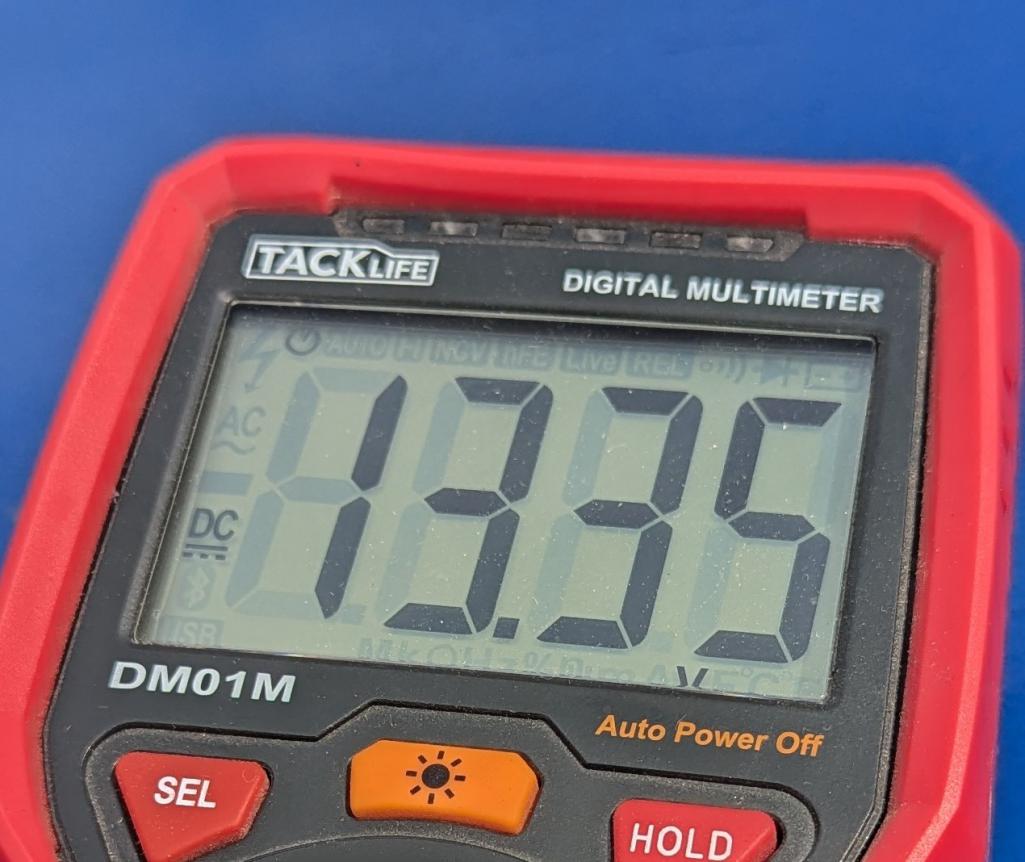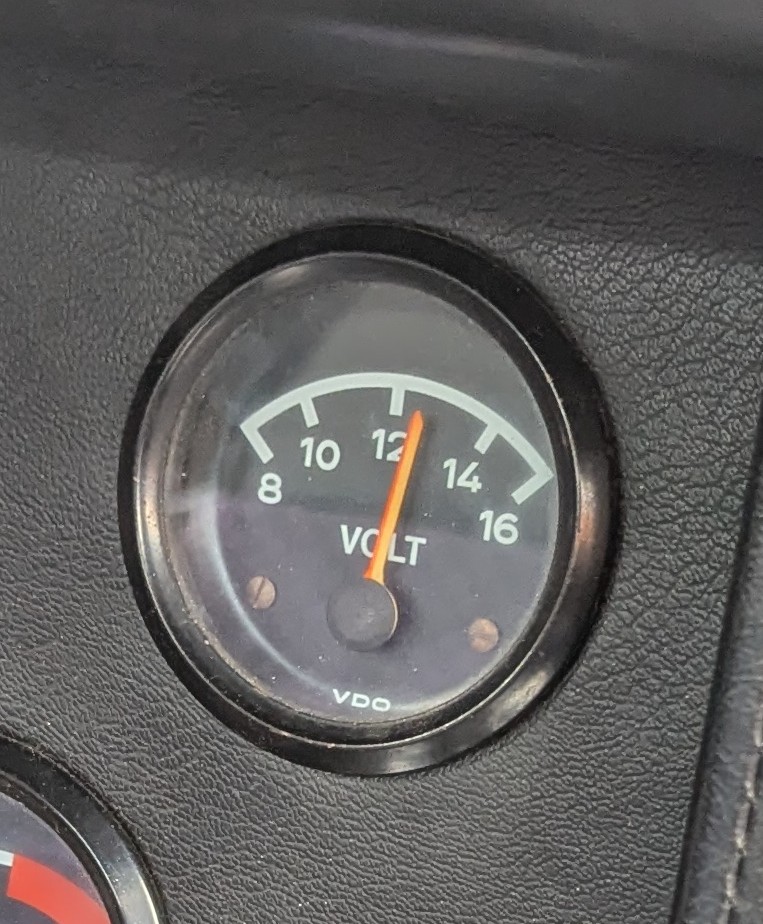|
|

|
Porsche, and the Porsche crest are registered trademarks of Dr. Ing. h.c. F. Porsche AG.
This site is not affiliated with Porsche in any way. Its only purpose is to provide an online forum for car enthusiasts. All other trademarks are property of their respective owners. |
|
|
  |
| windforfun |
 Jun 25 2024, 09:03 AM Jun 25 2024, 09:03 AM
Post
#21
|
|
Advanced Member     Group: Members Posts: 2,057 Joined: 17-December 07 From: Blackhawk, CA Member No.: 8,476 Region Association: None 
|
Copy that. The power supply reads out to one place & your DMM reads out to two places. The DMM is more precise & only more more accurate if it's calibrated. Precision & accuracy are not the same. Yup Former USAF electronics tech. Fully familiar with using a $3000 (in 1980s dollars) HP bench DMM with resolution to the 4th decimal place with fully traceable calibration to measure a stupid 9v battery. No need for that type of accuracy or precision for automotive hobby work. Even working on complicated electronics it was very rare to ever need that level of accuracy and precision. Flukes were disposed of like toilet paper (IMG:style_emoticons/default/sad.gif) The sad joke was that if you were going to break or lose a piece of test equipment, make sure it was something big and expensive like a $12k O-scope or $30k spectrum analyzer. They can withhold a Fluke out of your check via GPLD if they felt so inclined (Government property Lost or Damaged) but when you made $12k a year; they were never going to recoup something expensive. Recognize anything? Attached thumbnail(s) 
|
| emerygt350 |
 Jun 25 2024, 09:25 AM Jun 25 2024, 09:25 AM
Post
#22
|
|
Advanced Member     Group: Members Posts: 3,016 Joined: 20-July 21 From: Upstate, NY Member No.: 25,740 Region Association: North East States |
|
| Superhawk996 |
 Jun 25 2024, 09:29 AM Jun 25 2024, 09:29 AM
Post
#23
|
|
914 Guru      Group: Members Posts: 7,219 Joined: 25-August 18 From: Woods of N. Idaho Member No.: 22,428 Region Association: Galt's Gulch 
|
Just checked the grounds engine to body engine to post, post to wall etc, , all good, less than 0.1 resistance everywhere. Didn't pull the gauge yet to check that. Gotta go shopping first. .1 ohm x 10amp draw = 1v drop. Even 0.05 ohm x 20 amp load = 1v drop. Unacceptable Measure voltage drop across the cable while cranking to get an accurate assessment of resistance. Not sure how you’re wired to battery. Separate independent wire or are you pulling though one of the smaller OEM leads that come off battery positive? |
| Superhawk996 |
 Jun 25 2024, 09:33 AM Jun 25 2024, 09:33 AM
Post
#24
|
|
914 Guru      Group: Members Posts: 7,219 Joined: 25-August 18 From: Woods of N. Idaho Member No.: 22,428 Region Association: Galt's Gulch 
|
|
| Superhawk996 |
 Jun 25 2024, 09:53 AM Jun 25 2024, 09:53 AM
Post
#25
|
|
914 Guru      Group: Members Posts: 7,219 Joined: 25-August 18 From: Woods of N. Idaho Member No.: 22,428 Region Association: Galt's Gulch 
|
gauge #1
Delay and damping behavior related to internal capacitance used for damping. Sorry for shaky video, couldn't find my little mini tripod. https://www.youtube.com/watch?v=Hq94EuI9_2g?si=bXc5csV9tLxkHtav @emeryGT350 |
| ClayPerrine |
 Jun 25 2024, 10:31 AM Jun 25 2024, 10:31 AM
Post
#26
|
|
Life's been good to me so far.....                Group: Admin Posts: 16,443 Joined: 11-September 03 From: Hurst, TX. Member No.: 1,143 Region Association: NineFourteenerVille 
|
For what it is worth, I use the stock voltmeter as a visual brake light checker. If the brake lights come on, the gauge moves.
If you want to use it for something else, you will have to rewire it to have a connection directly to the battery. |
| rjames |
 Jun 25 2024, 10:47 AM Jun 25 2024, 10:47 AM
Post
#27
|
|
I'm made of metal     Group: Members Posts: 4,313 Joined: 24-July 05 From: Shoreline, WA Member No.: 4,467 Region Association: Pacific Northwest 
|
emerygt350 might just have a bad gauge. Mine gave inconsistent readings, started reading ~5 volts under, then later 10 under, and then ultimately nothing. Tapping it once in a while would bring it back to life, but eventually it completely died.
|
| Superhawk996 |
 Jun 25 2024, 11:06 AM Jun 25 2024, 11:06 AM
Post
#28
|
|
914 Guru      Group: Members Posts: 7,219 Joined: 25-August 18 From: Woods of N. Idaho Member No.: 22,428 Region Association: Galt's Gulch 
|
emerygt350 might just have a bad gauge. Mine gave inconsistent readings, started reading ~5 volts under, then later 10 under, and then ultimately nothing. Tapping it once in a while would bring it back to life, but eventually it completely died. Anyone have one opened up? I’d be curious to verify what’s doing the damping. I’m assuming it’s just a little ceramic disc capacitor via RC circuit. However based on how this one gauge will linger at 16v position while the other doesn’t (as long) I suspect there is some difference in capacitance and/or resistor values between my two gauges. |
| emerygt350 |
 Jun 25 2024, 11:17 AM Jun 25 2024, 11:17 AM
Post
#29
|
|
Advanced Member     Group: Members Posts: 3,016 Joined: 20-July 21 From: Upstate, NY Member No.: 25,740 Region Association: North East States |
For what it is worth, I use the stock voltmeter as a visual brake light checker. If the brake lights come on, the gauge moves. If you want to use it for something else, you will have to rewire it to have a connection directly to the battery. Mine is running straight to the battery post. The original wiring now operates a relay. I suspect it may be failing, as mentioned above. Tapping it causes it to move and it's been slowly getting worse. I checked all the connections behind it when I noticed tapping made a difference (couple weeks ago). I say less than .1 because on my lowest setting I get a 0 on the resistance. |
| emerygt350 |
 Jun 25 2024, 11:20 AM Jun 25 2024, 11:20 AM
Post
#30
|
|
Advanced Member     Group: Members Posts: 3,016 Joined: 20-July 21 From: Upstate, NY Member No.: 25,740 Region Association: North East States |
emerygt350 might just have a bad gauge. Mine gave inconsistent readings, started reading ~5 volts under, then later 10 under, and then ultimately nothing. Tapping it once in a while would bring it back to life, but eventually it completely died. Anyone have one opened up? I’d be curious to verify what’s doing the damping. I’m assuming it’s just a little ceramic disc capacitor via RC circuit. However based on how this one gauge will linger at 16v position while the other doesn’t (as long) I suspect there is some difference in capacitance and/or resistor values between my two gauges. That is really interesting. The way it sat at 16... |
| Superhawk996 |
 Jun 25 2024, 11:24 AM Jun 25 2024, 11:24 AM
Post
#31
|
|
914 Guru      Group: Members Posts: 7,219 Joined: 25-August 18 From: Woods of N. Idaho Member No.: 22,428 Region Association: Galt's Gulch 
|
emerygt350 might just have a bad gauge. Mine gave inconsistent readings, started reading ~5 volts under, then later 10 under, and then ultimately nothing. Tapping it once in a while would bring it back to life, but eventually it completely died. Anyone have one opened up? I’d be curious to verify what’s doing the damping. I’m assuming it’s just a little ceramic disc capacitor via RC circuit. However based on how this one gauge will linger at 16v position while the other doesn’t (as long) I suspect there is some difference in capacitance and/or resistor values between my two gauges. That is really interesting. The way it sat at 16... Would be totally consistent with an RC charging constant that takes time both to build up - which will happen more slowly at low voltage and will take longer to bleed off at high voltage I’ll try to get another video of the other gauge up later so you can see the difference between the two. The absolute worst case is that it gets mechanically “stuck” up there after being driven to full scale but I don’t think so based on how consistently it releases. |
| Superhawk996 |
 Jun 25 2024, 05:18 PM Jun 25 2024, 05:18 PM
Post
#32
|
|
914 Guru      Group: Members Posts: 7,219 Joined: 25-August 18 From: Woods of N. Idaho Member No.: 22,428 Region Association: Galt's Gulch 
|
Gauge #2
Slightly different damping behavior. Perhaps a little slower to rise up to voltage when starting from 8 volts. Much quicker to release once it has been brought up to 16 volts. https://www.youtube.com/watch?v=9ar5kOuEUAk @emerygt350 |
| emerygt350 |
 Jun 25 2024, 07:19 PM Jun 25 2024, 07:19 PM
Post
#33
|
|
Advanced Member     Group: Members Posts: 3,016 Joined: 20-July 21 From: Upstate, NY Member No.: 25,740 Region Association: North East States |
It is interesting how in both cases they behaved best at 12 volts but one was slow lower and the other misbehaved higher.
|
| Superhawk996 |
 Jun 25 2024, 07:54 PM Jun 25 2024, 07:54 PM
Post
#34
|
|
914 Guru      Group: Members Posts: 7,219 Joined: 25-August 18 From: Woods of N. Idaho Member No.: 22,428 Region Association: Galt's Gulch 
|
It is interesting how in both cases they behaved best at 12 volts but one was slow lower and the other misbehaved higher. The variance in damping isn’t terribly surprising. Assuming I’m right that they are using an RC circuit for damping, the tolerance of resistors would have been +/- 10% and capacitors could be 20% or more if there is an electrolytic capacitor in there. And that would be before 50 years of aging. I think it’s a combination of what was said earlier - cheap gauge built to do a basic job at a an affordable price point. However what has always been pretty clear to me is that the accuracy is pretty good. 0.5 volt +/- really is no big deal in the scheme of things. Add in 50 year old aging wire harness with convoluted 12v+ sourced off the brake lamp circuit and you get the typical bounce as lights cycle on/off. Let us know what you find with yours. If I ever find one that is in-op, I’ll tear it down to verify what is being used for damping. |
| emerygt350 |
 Jun 26 2024, 05:02 AM Jun 26 2024, 05:02 AM
Post
#35
|
|
Advanced Member     Group: Members Posts: 3,016 Joined: 20-July 21 From: Upstate, NY Member No.: 25,740 Region Association: North East States |
I finally dug into the console. I had compared the voltage on the dmm at the gauge to the battery, and they were off. The gauge was showing pretty close to what it was getting. The DACO has wired his Autometer AFR into the same relay controlled circuit as the gauge, so the gauge is not alone on that circuit (completely forgot). It's the damn O2 sensor heater. A little tiny 20 gauge or less wire takes a big hit while the sensor is heating. Disconnected the AFR and all was good.
|
| Superhawk996 |
 Jun 26 2024, 06:08 AM Jun 26 2024, 06:08 AM
Post
#36
|
|
914 Guru      Group: Members Posts: 7,219 Joined: 25-August 18 From: Woods of N. Idaho Member No.: 22,428 Region Association: Galt's Gulch 
|
(IMG:style_emoticons/default/smilie_pokal.gif)
Now those delays and variable voltage drops you were seeing make sense. |
| emerygt350 |
 Jun 26 2024, 06:13 AM Jun 26 2024, 06:13 AM
Post
#37
|
|
Advanced Member     Group: Members Posts: 3,016 Joined: 20-July 21 From: Upstate, NY Member No.: 25,740 Region Association: North East States |
(IMG:style_emoticons/default/smilie_pokal.gif) Now those delays and variable voltage drops you were seeing make sense. sigh. All I had to do was hook the o2 heater wire to the old lines that are now triggering the relay rather than the hot going to the gauge and all is good. |
  |
1 User(s) are reading this topic (1 Guests and 0 Anonymous Users)
0 Members:

|
Lo-Fi Version | Time is now: 11th July 2025 - 12:26 PM |
Invision Power Board
v9.1.4 © 2025 IPS, Inc.











